Posted by fabioricotta
This post was originally in YOUmoz, and was promoted to the main blog because it provides great value and interest to our community. The author's views are entirely his or her own and may not reflect the views of SEOmoz, Inc.
Hi SEOmoz folks,
Some weeks ago my coworker Leandro Riolino published in our blog an experiment he was working with. The idea of the experiment was to try link to a page A from a page B with 3 different anchor texts providing value of all those anchor texts.
The idea is simple: we chose 3 random keywords, created an internal page, created 3 links to different URLs that have a canonical tag to the main page. You can see this idea illustrated bellow:
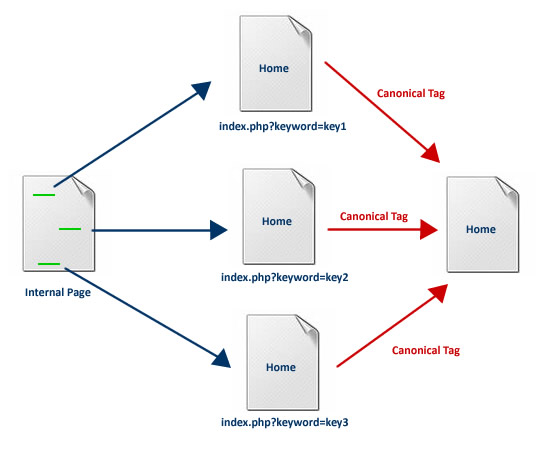
So, after choosing the 3 keywords we submitted each one to check if Google has any occurrences of them:
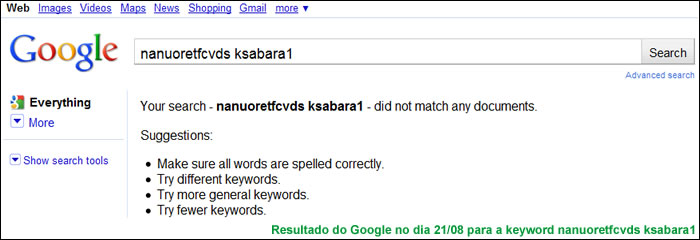
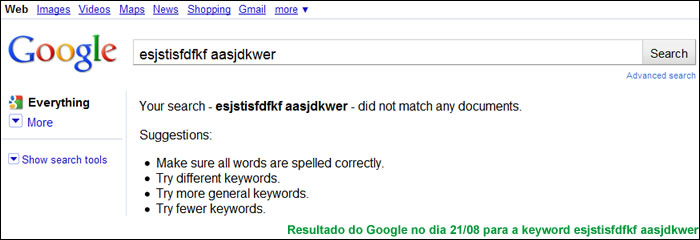
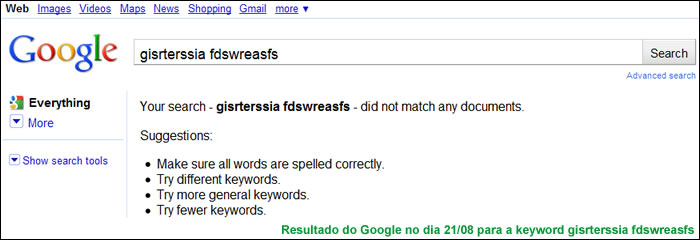
Then we bought a new domain, that has no backlinks and as you can see bellow, Google shows us that this website isn't in the index:
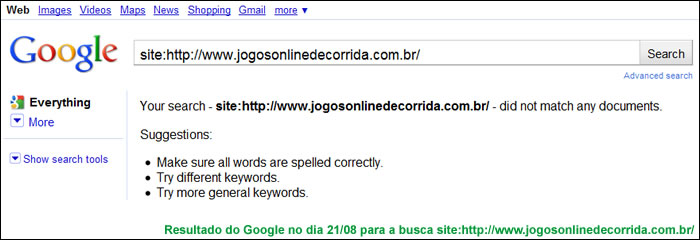
Creating the Index Page
To start the experiment my coworker downloaded a random template from the Internet with some random content inside, changing only the page title, meta description and H1 tag focusing all them into the main website keyword “jogos online de corrida” (online race games in English). The major change he made into the template was to add a conditional check with PHP to insert the canonical tag if the URL requested had any parameter:
<? if (isset($_GET[keyword]))
{ ?>
<link rel="canonical" href="http://www.jogosonlinedecorrida.com.br" />
<? } ?>
For those who know something about PHP language, this code checks if the variable $_GET exists. If this check returns true the code insert the canonical tag line into the HTML.
It’s important to say that we do not mention any of those 3 keywords in the Index Page. So, this page can’t rank for having a keyword mention… instead Google needs to check it’s backlinks.
Internal Page
The next step was to create the internal page. We created it with 3 links in 3 different page positions: one in the header, another one in the content area and the last one in the footer area with the following anchor text: “nanuoretfcvds ksabara1″, “esjstisfdfkf aasjdkwer” e “gisrterssia fdswreasfs”. Each link had different targets:
- http://www.jogosonlinedecorrida.com.br/?keyword=key1
- http://www.jogosonlinedecorrida.com.br/?keyword=key2
- http://www.jogosonlinedecorrida.com.br/?keyword=key3
It’s important to say that we used the meta tag <meta name=”robots” content=”noindex,follow” /> into this internal page, so this page would not rank for those 3 keywords.
Indexing the Content
In order to have the pages indexed by Google my coworker created a Sitemap.XML with the 2 pages (home and internal) and submitted it to Google Webmaster Tools. It is important to say that we did not share this page in any webpage and did not submit in any bookmarking service.
After 2 weeks, our website was showing the 2 pages when we used the operator “site:”. After one more week Google was showing the 2 pages and the link to their cache.
After this “waiting time” we searched in Google on the 3 keywords that we created and noticed that the main page was appearing for ALL of them as you can see bellow:



So, with this small experiment we noticed that Google was giving to a page 3 anchor text values if we use the canonical tag as a funnel.
Conclusions and Applications
With this small experiment we have a hint on how Google treats the anchor text of a page that uses the rel=canonical tag and now we can try to create some new experiments (eg.: use a parameter in the logo link to your main page, and then receive the anchor text of the second link – because we know that only the first anchor text counts).
We know that this is a single experiment and we need to see if this works in a real website, because we know that Google understands the page segments and this maybe does not work as we presented in this article. We still need to try and check this.
I can’t end this article until saying congratulations to my coworker Leandro that provided me a huge amount of knowledge with this experiment – thank you.
Hope you liked this article!
social marketing social marketing plan social marketing campaigns social marketing strategies social marketing services
No comments:
Post a Comment